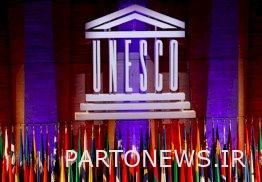Intangible cultural heritage is a carrier for the rapprochement of different ethnicities and nations

Cultural diversity is an opportunity for peace and sustainable development, and the 2003 convention emphasized the importance of protecting intangible heritage by emphasizing intergenerational education. One of the strengths of this convention is the emphasis on preserving cultural diversity and respecting the intangible heritage of other communities.
In the 1978 Bogotá Declaration, it is emphasized that cultural authenticity is formed based on the understanding and recognition of the components of cultural identity, regardless of their geographical origin and how they are formed, and every person or group has both the right and duty to determine their cultural identity. Therefore, the intangible heritage belongs to all communities that use it, and the precedence and backwardness of governments in the global registration of elements does not determine their ownership.
Registering the elements of intangible cultural heritage in the UNESCO lists as a protective measure prevents the appropriation of culture and supports the bearers and executors of this heritage.
Registering intangible cultural heritage elements in UNESCO lists does not lead to the identification and determination of ownership rights. In other words, by registering their intangible heritage elements, countries will not become the owners of that element. Because the dynamic and mobile nature of intangible cultural heritage makes it possible for this heritage to be transferred to other communities in different ways after being formed in an origin and then shared.
In such a case, a significant number of intangible cultural heritage elements should be considered as the common heritage of various communities in a cultural geography and cannot be used as a tool for their own ownership and depriving other communities of studying and recording it.
For this purpose, according to UNESCO rules, countries can register their common heritage both independently and jointly with other countries in UNESCO lists, but UNESCO encourages member countries to prepare joint files.
It is clear that the case of Pahlavi culture, which was registered by Azerbaijan at the recent UNESCO meeting, has many similarities with the case of Pahlavi and Zorkhane rituals, which was previously registered by Iran in 2010. We must remember that the current country of Azerbaijan was a part of the territory of our country Iran in the historical period, so the existence of a warrior culture in that land is neither unlikely nor strange. Therefore, this action does not mean that country owns the said element.
As another example, in the recent meeting in Morocco, the oud instrument, which is known as the king of instruments in Arab countries, was jointly registered by the two countries of Iran and Syria. Are Arab countries allowed to protest in this regard? No, because this action does not exclude other countries from registering the oud instrument and they can register this instrument in the coming years.
The result is that the competition and use of the words of ownership, competition, antiquity, origin, appropriation of cultural heritage, etc. have never been approved in this field and it has caused differences between communities and will cause communities, instead of achieving the cultural goals of UNESCO, from distance themselves that this issue is in conflict with the nature and spirit of the 2003 convention that emphasizes peace and dialogue between nations.
In the field of intangible cultural heritage, valuing and prioritizing is also not acceptable because no criteria can justify the difference between high and low level cultures.
It is hoped that the registration of the elements of intangible cultural heritage will increase public attention to the importance and value of protecting the cultural roots and sustain the raising of awareness on the issue of cultural identity and ultimately promise greater solidarity and peace between the nations of the region and the world.

